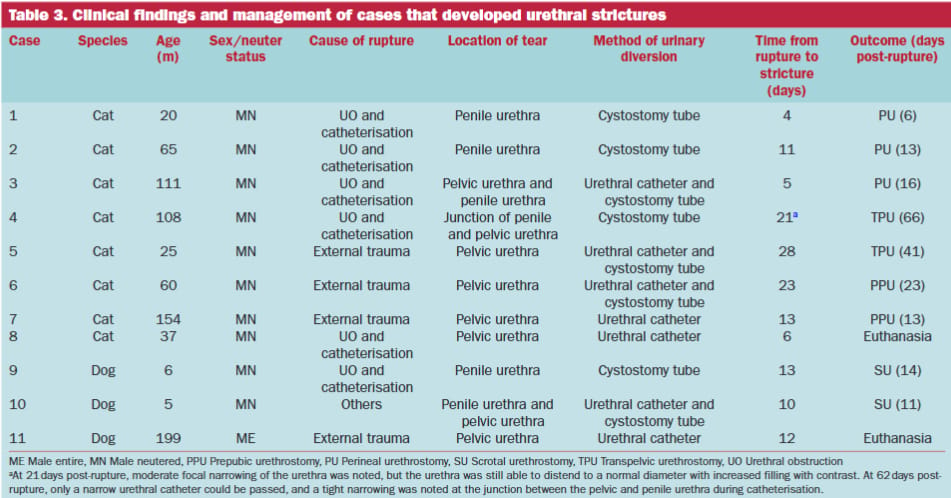- Veterinary View Box
- Posts
- In case of urinary rupture, some cases can be managed medically.
In case of urinary rupture, some cases can be managed medically.
JSAP 2025
C. S. L. Toh, M. Rossanese, S. D. Cook
Background
Urinary tract rupture in small animals, often due to trauma or iatrogenic causes, can lead to serious complications including uroperitoneum and electrolyte imbalances. While surgical repair is common, conservative management involving temporary urinary diversion without directly addressing the rupture site has gained interest. This study aimed to describe outcomes of conservatively managed urinary tract ruptures over two decades at a referral hospital, examining causes, methods of urinary diversion, and associated complications.
Methods
A retrospective review of medical records from 2003 to 2024 identified dogs and cats with confirmed urinary tract rupture managed conservatively. Inclusion required confirmation via imaging, biochemical analysis, or clinical suspicion, and resolution of urine leakage without surgical repair. Data collected included rupture etiology and location, diversion methods and duration, resolution time, and complications such as strictures or infections. Statistical analyses assessed data distribution and frequencies.
Results
Fifty-two cases (40 cats, 12 dogs) were included. Rupture was most commonly due to urethral obstruction with catheterization (18), cystocentesis (17), and trauma (8). Common rupture sites were the urethra (25) and bladder (19). Bladder ruptures were typically managed with urethral catheters and/or peritoneal drains; urethral ruptures used urethral catheters and/or cystostomy tubes. Median time to resolution was 3 days for bladder ruptures and 6.5 days for urethral ruptures. Eleven of 25 urethral rupture cases developed strictures, often requiring urethrostomy. Urine cultures were positive in 14 of 22 tested cases, most frequently involving Escherichia coli.
Limitations
This retrospective study included only successfully managed cases, potentially introducing selection bias. Reasons for choosing conservative over surgical management were not documented, and follow-up imaging was not consistently available. The small sample sizes for certain rupture sites and reliance on clinical records for some diagnoses also limit generalizability.
Conclusions
Conservative management is a viable option for urinary tract ruptures in both cats and dogs, especially in cases of iatrogenic injury. Urethral strictures and urinary tract infections are notable risks, particularly with prolonged catheterization. Careful selection of cases, aseptic techniques, and close monitoring are essential. Future prospective studies are needed to refine criteria for conservative versus surgical intervention.

How did we do? |
Disclaimer: The summary generated in this email was created by an AI large language model. Therefore errors may occur. Reading the article is the best way to understand the scholarly work. The figure presented here remains the property of the publisher or author and subject to the applicable copyright agreement. It is reproduced here as an educational work. If you have any questions or concerns about the work presented here, reply to this email.